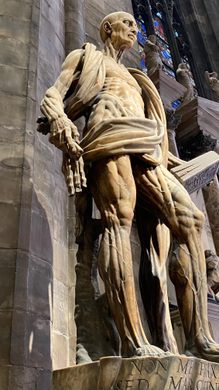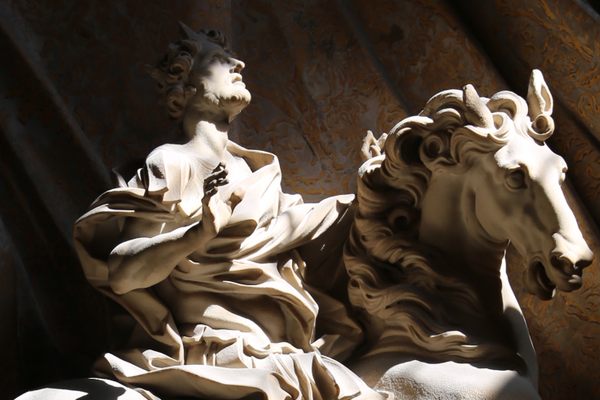'Saint Bartholomew Flayed'
This grisly effigy displays an early Christian martyr who was skinned alive and beheaded.
Saint Bartholomew was one of the Twelve Apostles of Jesus Christ. After the Ascension, it’s said the saint traveled to the east, and then onto Greater Armenia. According to traditional hagiography, he was flayed and beheaded there for converting the king to Christianity. Some accounts attest that instead of getting flayed, Bartholomew was crucified upside down like Saint Peter.
Due to this grisly tale, Saint Bartholomew is often depicted alongside his flayed skin (or severed head) in art, including “The Last Judgment” by Michelangelo. Sixteenth-century Italian sculptor Marco d’Agrate, however, depicted him in a much more ghastly manner.
Commonly referred to as “Saint Bartholomew Flayed,” the sculpture was originally crafted in 1562. It stands at the left of the altar of Duomo di Milano and is considered the most notable piece of art in the cathedral. At first glance, the saint seems to be just a skeletal man wearing a stole, but upon closer look, visitors may notice that it’s actually his flayed skin he is holding. All of Bartholomew’s muscles, veins, and tendons are exposed across the statue.
The sculpture was likely less of a piece of Christian faith and rather an artistic essay on human anatomy, offering a stunning Renaissance-era depiction of muscles and body structures.
Know Before You Go
Timed entrance tickets are now required to enter the Duomo.































Follow us on Twitter to get the latest on the world's hidden wonders.
Like us on Facebook to get the latest on the world's hidden wonders.
Follow us on Twitter Like us on Facebook